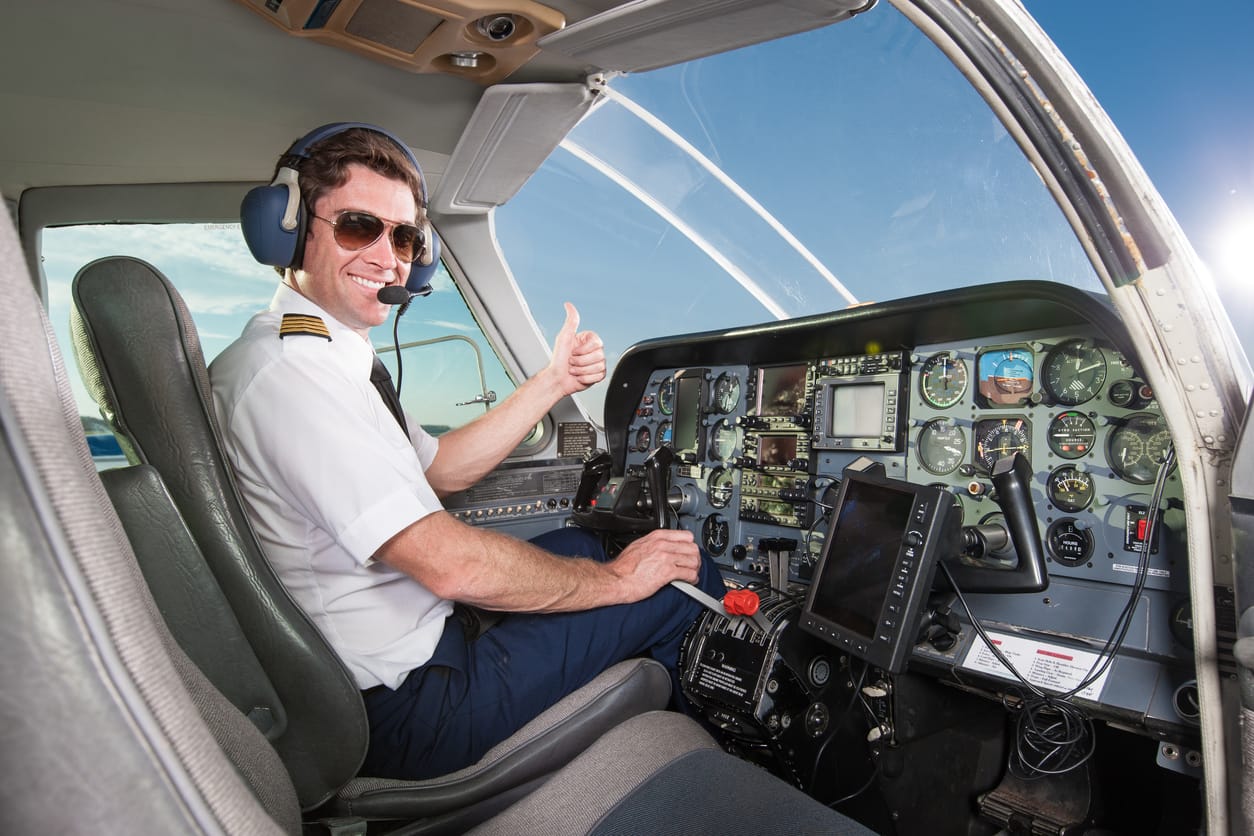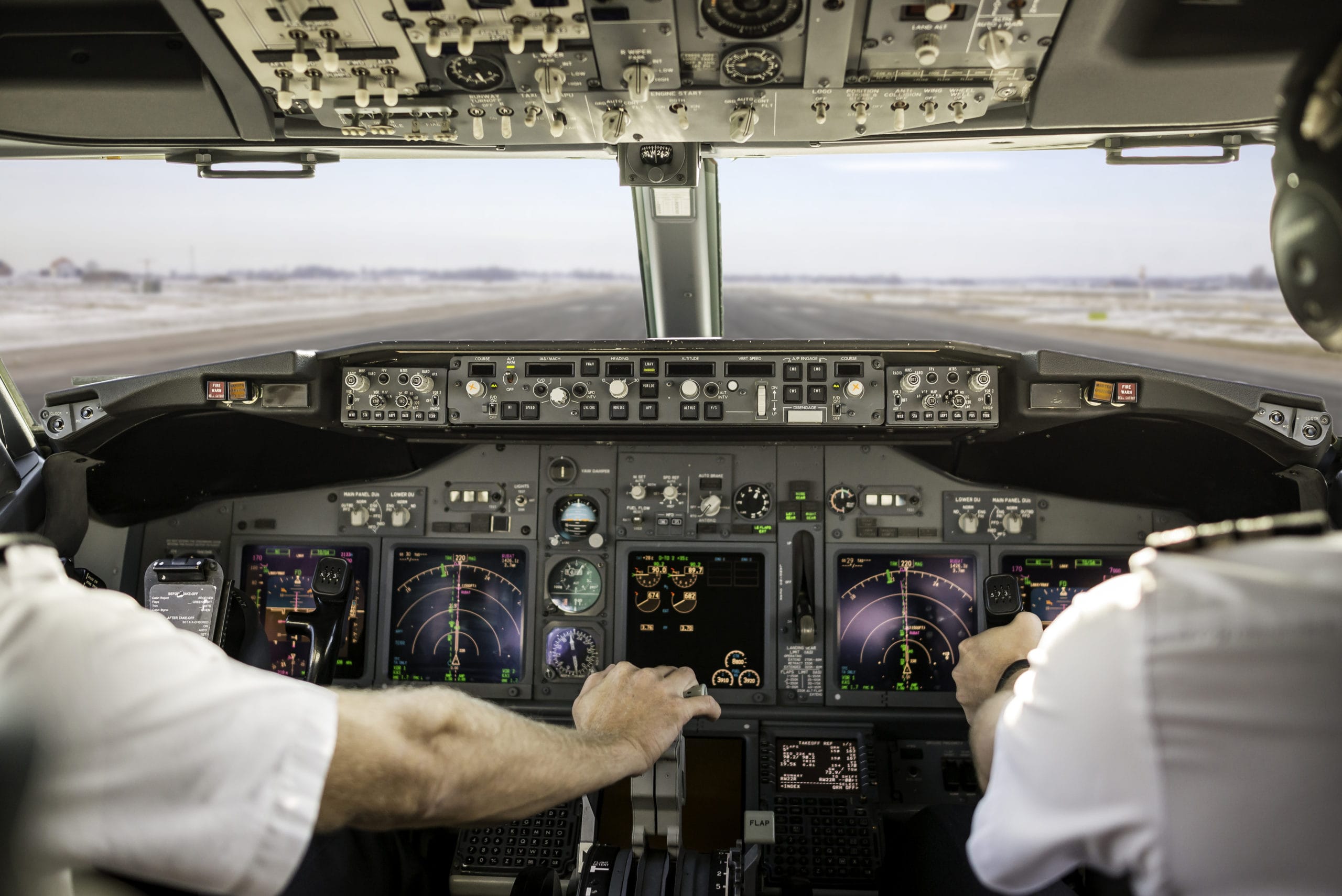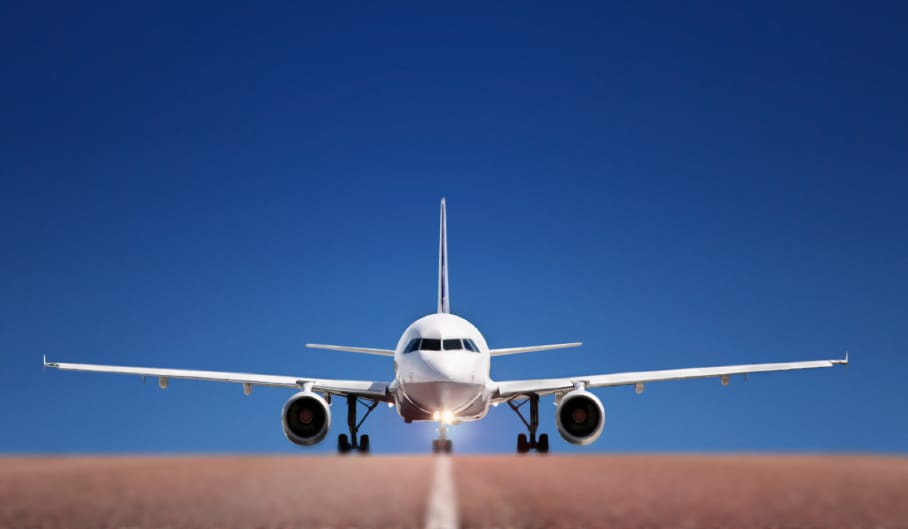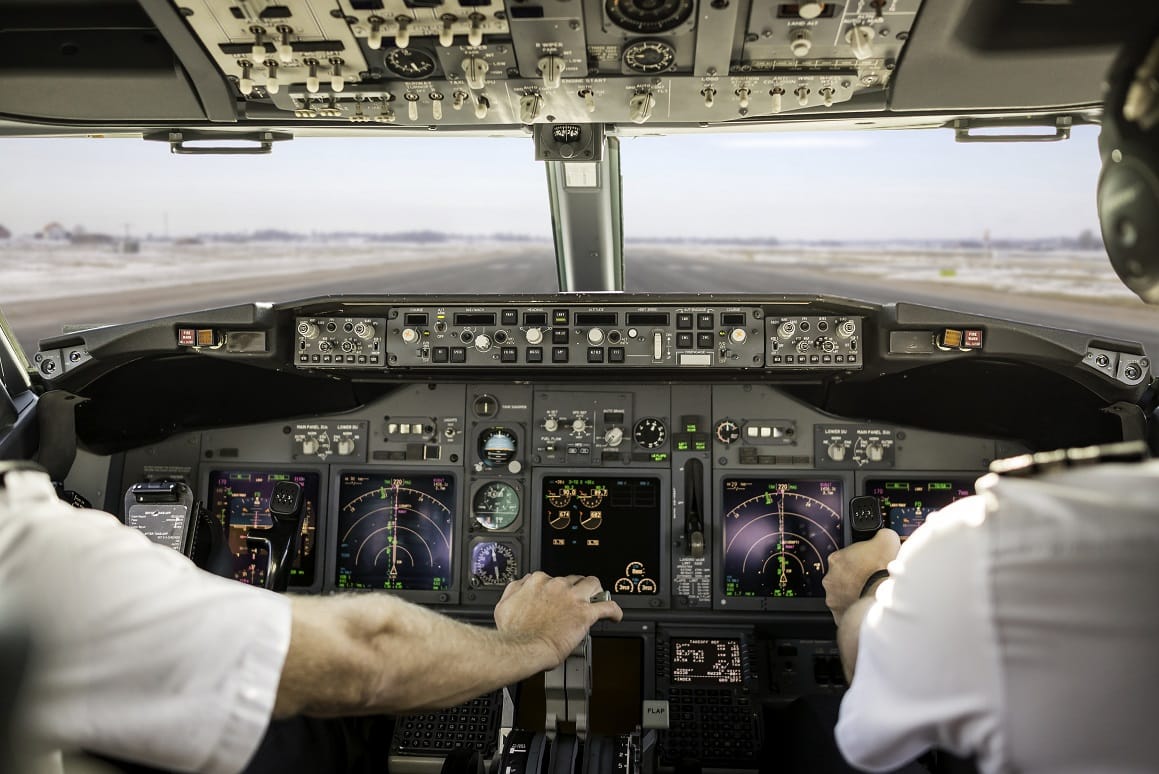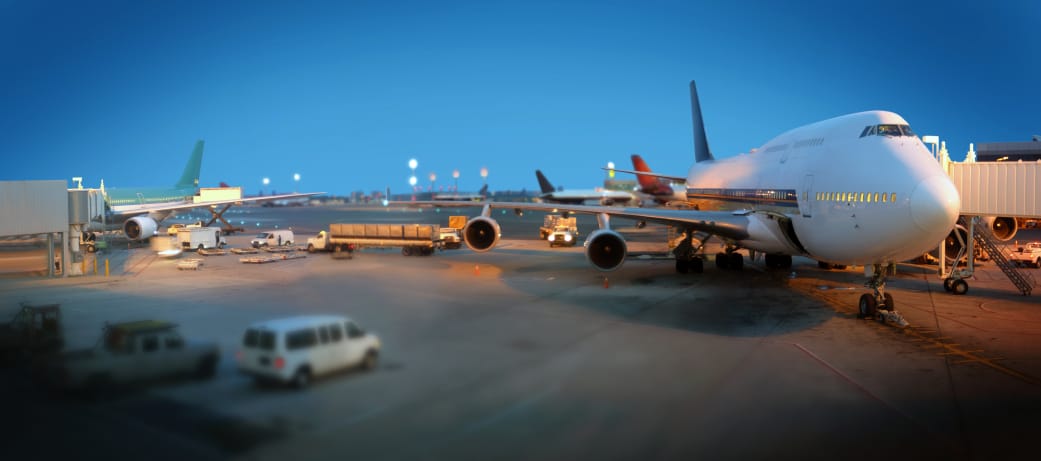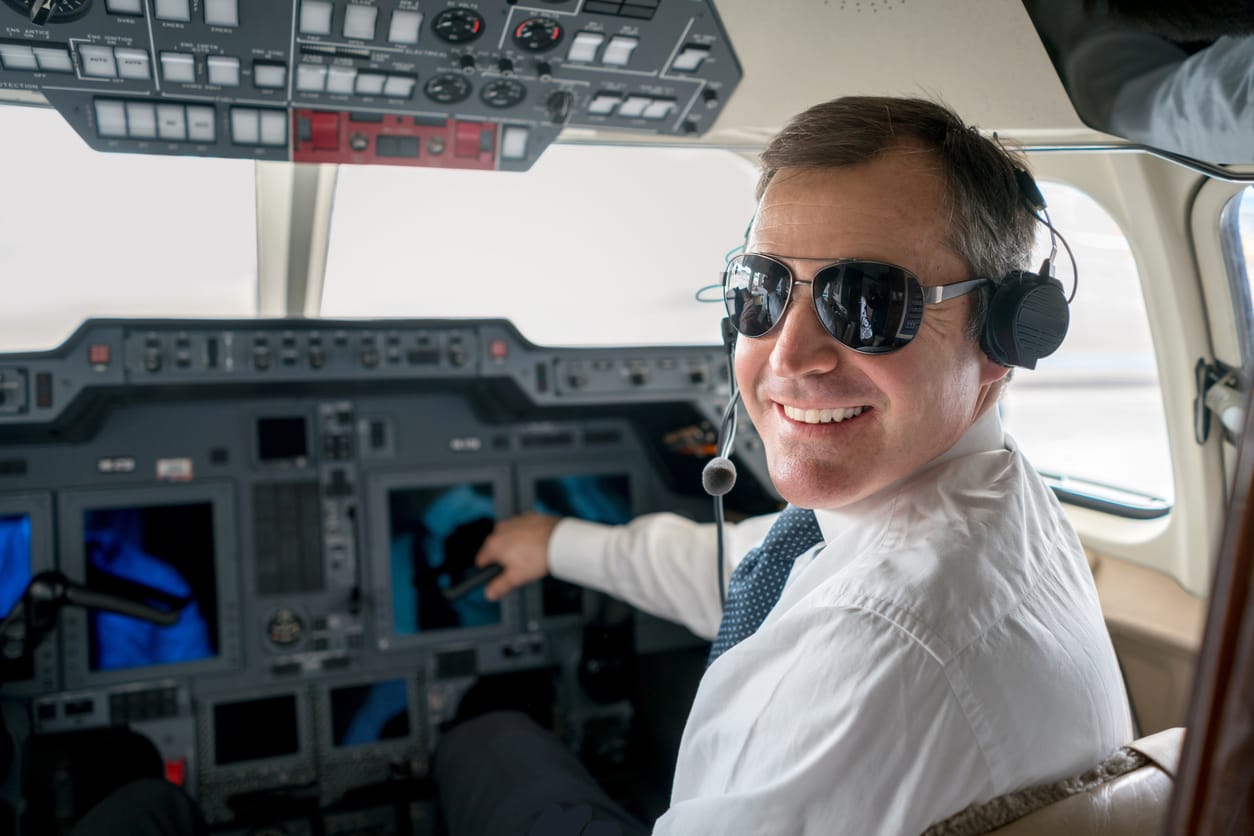In our recent guide, we outlined steps to becoming a pilot in general aviation and if you’re still deciding whether you want to become a pilot or not, we urge you to read our first guide before jumping into this one. If you have already read that guide and / or you have definitely decided you want to be a commercial pilot, feel free to skip the steps you’ve already completed as a part of our first guide. Additionally, if you have an interest in becoming a commercial airline pilot, we recommend that you read our career guide How To Become an Airline Pilot as that guide specifically focuses on the airline pilot career path and this guide highlights a broad view of all the possible commercial pilot careers.
However, if you are starting fresh, but know you have a strong interest in becoming a commercial pilot, read on for a comprehensive guide for starting your commercial pilot career and how to choose the right industry and role for you.
Phase 1: Self-Discovery (Skip if completed)
Before you jump into your journey of getting paid to fly, it’s important to first understand yourself to know whether a career as a pilot is the right professional fit for you or if recreational flying is the way to go. To make this process as seamless as possible, we’ve incorporated essential steps and resources to better understand who you are as a person and how you align with various commercial pilot careers.
As we stated above, if you’ve already completed this section as a part of our previous guide, feel free to skip to Phase 2.
Step 1: Check Your Commercial Pilot Eligibility
Before you begin your pilot career path, it is worth checking that you meet the minimum requirements for granting a pilot’s license as defined by the Federal Aviation Authority (FAA). Additionally, there are eligibility requirements that pertain specifically to when you are applying for a commercial pilot certificate.
Minimum Pilot Eligibility Requirements:
-
- Age: Commercial Pilot applicants must be at least 18 years old
-
- Medical: To exercise commercial pilot privileges, one must hold at least a Second Class Medical Certificate.
Commercial Pilot Eligibility Requirements:
-
- Pilot Requirements: Commercial pilot applicants must be at least 18 years old, have at least a private pilot certificate and at least 250 hours of flying time logged. Applicants must also read, speak, write and understand English, pass a Second Class aviation medical exam, and complete the required ground and flight training elements.
Step 2: Take a Discovery Flight
If you already have some flying experience or license, feel free to skip this step; however, if you’re brand new to aviation, consider taking what is called a discovery flight, also known as an introductory flight. A discovery flight allows you to gauge whether you really enjoy flying before building an entire career on it.
How to Get a Free Discovery Flight
Many discovery flights will cost around $100, but there are avenues for getting a free discovery flight:
-
- EAA’s Free Young Eagles Flights: Experimental Aircraft Association (EAA) is a community organization for people interested in a variety of aviation related activities. They also offer free discovery flights for kids and teens ages 8-17. You can learn more at https://www.eaa.org/eaa/youth/free-ye-flights
- Ask everyone you know for connections to local pilots they might know. Pilots love an excuse to fly, and most are happy to take newcomers for a ride!
Step 4: Assess Your Interests & Values
Assessing your personal interests and values can help you to identify how well you fit various career paths and roles. This is a vital step in building a fulfilling career that aligns with your overall goals professionally and in life in general.
Self-Discovery Assessments for interests, values, and more:
-
- MAPP: The Motivational Appraisal of Personal Potential is a career assessment that focuses on what motivates you. They offer a free and paid version of the assessment, with trillions of unique results written in narrative format that cover things like your learning style, how you relate to people, data, things, etc.
- 16Personalities: This assessment uses the Myers-Briggs Type Indicator (MBTI) for determining personality types. 16Personalities categorizes these types into four different domains: Analysts, Diplomats, Sentinels, and Explorers.
- Keirsey Temperaments: The Keirsey assessment is a great resource for understanding how you communicate with others and how you take action and is a good complement to the 16Personalities.
Common Interests:
What are you excited about? Do you really like flying? Do you enjoy all the things that come with becoming a pilot, like learning aircraft systems, weather, or flight planning? Do you like to travel, or are you more of a homebody? Your interests and values will determine if becoming a pilot is the next step. It will help to examine these values for yourself.
- Natural interest in aviation: Any career field you choose should align with your interests. Although there are many variances among pilots in terms of background, personality, and experience, certain interests tend to be commonly shared across the profession. A natural fascination with airplanes is a given.
- Travel opportunities: Many pilots are also drawn to the opportunity for travel, enjoying the chance to explore new destinations and experience diverse environments.
- Problem-solving: Pilots often have a strong interest in problem-solving and critical thinking, and flying demands quick decisions under pressure.
- Technology: A passion for technology and complex systems is also common, given the highly advanced avionics found in modern aircraft.
- Meteorology: Weather is something all pilots must be educated about, and many pilots find a specific interest in meteorology
- Safety: Pilots often enjoy the predictability and reassurance of a positive safety culture. Safety systems and systems engineering, where understanding how various components of the aircraft and its environment interact, is crucial. Most pilots comfortably operate within boundaries of risk.
- Various others: Pilots, like everyone else, have a variety of other interests, as well, like music, dogs, skiing, or cars.
Common Values:
Pilots share a strong set of core values that reflect a high level of responsibility.
- Safety: Among values all pilots hold, safety is the top priority, guiding every decision and action.
- Communication: Clear communication is essential for coordination with crew and air traffic control, passengers, ramp agents, and other crew members
- Discipline: There’s a certain culture in aviation in which discipline rules. Checklist use, for example. Even very experienced pilots use checklists religiously.
- Procedural knowledge: As one might guess, procedural knowledge helps maintain consistency and reduce risk.
- Rules: Pilots value rules and thrive in situations where rules are the expectation.
- Stress Management: The ability to stay calm under pressure, especially during unexpected situations, is a trait all pilots need.
- Professionalism: If you look at any pilot on any given day, professionalism is a value you will notice, from their uniforms to how they interact with their passengers and crew members.
- Adaptability: Knowing how to adapt to what’s happening at the given moment is crucial. From private pilot to airline transport pilot, change is the only constant, and pilots are very adept at pivoting.
- Curiosity: The desire to seek knowledge in an ever-changing industry is inevitable.
Step 3: Assess Your Personal Strengths & Areas For Growth
Another key part of career planning is recognizing your personal strengths and identifying areas for growth. Understanding where you excel—and where you could use more development—can help you set meaningful short-term goals for Step 4. By targeting specific skills to build or refine, you’ll create a clearer, more focused path forward.
How to Assess Your Strengths:
- StrengthsFinder: This assessment helps you rank your strengths in order from strongest to weakest and helps you identify your top 5 strengths and your primary domain of strengths. It also advises on what areas you can strengthen and what areas to avoid personally and professionally.
Important Abilities for Commercial Pilots
- Situational Awareness: Commercial pilots excel in monitoring and responding to flight conditions, aircraft systems, and external factors like weather and traffic.
- Strong Decision-Making: They make quick and effective decisions under pressure, always prioritizing safety while assessing risks.
- Excellent Communication: Commercial pilots maintain clear and concise communication with air traffic control, the crew, and passengers in various situations.
- Technical Proficiency: They demonstrate in-depth knowledge of aircraft systems, avionics, and navigation, with the ability to troubleshoot mechanical or flight-related issues.
- Leadership & Teamwork: Pilots lead and coordinate effectively with co-pilots, cabin crew, and ground teams while maintaining authority and fostering collaboration.
- Stress Management: They maintain composure in high-pressure situations and effectively manage fatigue and long hours.
- Adaptability: Commercial pilots adjust to changing schedules, weather, and operational challenges while continuously learning new procedures and aircraft types.
- Strong Work Ethic & Discipline: They strictly adhere to safety regulations and checklists, with a commitment to ongoing learning and skill development.
Step 5: Set Short-Term & Long-Term Goals
Setting goals is a continual process that you should be doing on a regular basis throughout your career.
Setting Long-Term Goals
Long-term goals are those that typically take a significant amount of time, often longer than a year. Many career oriented goal planning is divided into 3- year, 5-year, 10-year, and/or life-time milestones. Long-term goals also help you identify the short-term goals that will help you to achieve your longer-term goals.
Recommended Long-Term Goals to Consider:
- Earn a Senior-Level or above role in aviation. You can learn more about job levels by visiting our Commercial Pilot Career Advancement section.
- Earn a degree. While earning a degree is not a requirement by the FAA to become a commercial pilot, some companies do require or prefer it. A degree can also help you stand out when you are preparing to advance your career.
- Develop a professional network. You begin developing your network at any stage; however, it’s important to nurture a network of professionals you can rely on at every stage and throughout your career.
Setting Short-Term Goals
Short-term goals are those that you can complete within a year or less, often within weeks or months. A typical cadence for evaluating your short-term goals and creating new ones is on a quarterly basis: 1st Quarter (Jan-Mar), 2nd Quarter (April-June), 3rd Quarter (July-September), 4th Quarter (October-December)
Your short-term goals will depend heavily on where you are at in your journey. And, if you’re reading this guide, it’s likely that you are at the very beginning and to help you along, we recommend adding some or all of the following items to your short-term goals.
Recommended Short-Term Goals to Include at this Stage
- Complete Phases 1-3 in this guide.
- Create a plan for strengthening the areas of growth identified in the previous section.
- Complete your Private PIlot Certificate, Instrument Rating, and Commercial Pilot Certificate.
Phase 2: Explore Commercial Pilot Career Paths
Step 6: Research Industries & Pilot Careers
Research is a necessary step in determining your path to becoming a commercial pilot. You’ll want to discover everything you can about the different sectors of the industry in order to determine which path best suits you. A commercial pilot certificate gives you the privilege of being paid to fly. Although other requirements exist for specific jobs ( airline pilots are required to obtain an Airline Transport Pilot Certificate, for example), commercial pilots may fly in a variety of industry sectors.
Commercial Pilot Industries to Research:
- Transportation & Infrastructure: The aviation industry is a vital part of global transportation and infrastructure, moving billions of passengers and goods worldwide. With strong demand for airline and cargo pilots, this sector plays a crucial role in business, tourism, and trade.
- Healthcare: Healthcare aviation pilots play a critical role in transporting patients, organs, and medical supplies, often in life-saving situations. This sector employs both fixed-wing and helicopter pilots for air ambulance and medical transport services.
- Law Enforcement & Public Safety: Law enforcement and public safety pilots support critical missions like police patrol, search and rescue, firefighting, and disaster response. These roles often require specialized training beyond flight experience, such as police academy certification for law enforcement pilots.
- Military: Military pilots serve their country while enjoying benefits like paid training, competitive salaries, and global travel. They fly various aircraft across branches like the Air Force, Navy, Army, Marines, Coast Guard, and Space Force, supporting missions from combat to search and rescue.
- Business: Corporate and business aviation offers flexible travel solutions for companies and executives, flying to destinations beyond commercial airline routes. Pilots in this sector may handle additional responsibilities like flight planning and customer service while enjoying unique destinations and premium travel perks.
- Recreation: Tourism and recreation pilots provide scenic flights and adventure experiences, such as Grand Canyon tours or skydiving operations. While often considered stepping-stone careers, these roles offer unique flying opportunities in stunning locations.
- Specialized: Agricultural, oil, and specialized industry pilots serve unique roles, including spraying crops, inspecting pipelines, and providing aerial support for tasks like tree removal. These jobs often involve specialized flying in challenging environments, such as farms, oil rigs, and remote areas.
- Media: Media and entertainment pilots perform stunts, flyovers, and air shows for movies, TV, and sports events. While these roles are rare and highly competitive, they offer exciting opportunities for those passionate about flying and entertainment.
- Education: Education and training pilots teach aspiring aviators how to fly, with many starting as flight instructors to gain experience for other commercial roles. This career path is highly rewarding for those passionate about aviation and education, with opportunities ranging from basic instruction to advanced certifications.
Step 7: Attend Pilot Career Events
Flight Training & Pilot Education Events
-
- EAA AirVenture Oshkosh (Oshkosh, WI) – The world’s largest airshow and aviation gathering, featuring workshops, forums, and exhibits on flight training, aircraft ownership, and pilot career paths.
- Sun ’n Fun Aerospace Expo (Lakeland, FL) – A major aviation event with training seminars, FAA safety briefings, and networking opportunities for aspiring pilots.
- NBAA Business Aviation Convention & Exhibition (NBAA-BACE) – Great for learning about corporate aviation and alternative career paths outside the airlines.
- Flight School Association of North America (FSANA) Conference – Focuses on flight training industry trends, school networking, and pilot education advancements.
FAA & Safety Seminars
-
- FAA Safety Team (FAASTeam) Seminars – Free workshops on pilot safety, regulations, and best practices, available nationwide.
- AOPA Flight Training Events & Rusty Pilot Seminars – Perfect for student and aspiring pilots to learn more about training pathways and industry updates.
Airshows & Expos with Pilot Training Focus
-
- International Women in Aviation Conference (WAI Conference) – Encourages aspiring pilots, with scholarship opportunities, training seminars, and industry networking.
- Redbird Migration Flight Training Conference – Focused on flight training innovation, including simulator advancements and pilot development.
- Commemorative Air Force (CAF) Airshows & Events – Offers historical aviation experiences and insights into professional pilot training pathways.
STEM & Aerospace Career Events
-
- Space Symposium (Colorado Springs, CO) – While focused on space, it covers advanced aviation technologies and aerospace pilot careers.
- Aerospace & Aviation Career Fairs at Universities – Many aviation universities (like Embry-Riddle, CAU, and Purdue) host open houses and events for prospective pilots.
Step 8: Interview Current Commercial Pilots
Once you’ve researched industries and roles you are interested in, a good next step you should consider is directly interviewing professionals who are currently filling those roles within their respective industries.
Step 9: Shadow or Volunteer
Job shadowing and volunteering provide invaluable hands-on experience in the flying world. Through job shadowing, individuals can observe daily operations in real time, learning about airport operations, pilot responsibilities, and multiple sectors in the aviation industry. Volunteering is a great way to get acquainted with the industry, make new friends, and find mentorship from other pilots. There are many pilot volunteer opportunities available. You could volunteer at an airshow or help a nonprofit aviation organization like EAA or Civil Air Patrol (CAP).
As a private pilot, one can volunteer flight hours for any one of numerous charity organizations designed to transport people, animals, and supplies. Pilots N Paws, for example, works to transport rescue animals to new homes. Multiple agencies work to assist in recovery efforts for human trafficking or natural disaster relief. There are many opportunities in the charity sector for new pilots to volunteer their time, learn new skills, and build hours – all for good causes.
Each of these experiences offer a unique opportunity to network with industry professionals, clarify career goals, and grow a genuine interest in the field.
Step 10: Compare Education & Training Pathways
The elements to flight training are all the same, but the methods can be very different. You might accomplish flight training at your own pace at the local flight school flying once or twice a week, or you might choose a fast-track flight academy where you fly every day and learn at a fast pace.
Or you might want to go to an aviation college and earn a degree alongside your flight certificates so that you can get that Restricted ATP. There’s no wrong way to do it, but you’ll want to find what works for you.
Start by researching the different ways to become a pilot. There are Part 61 schools and Part 141 schools. There are fast-track programs and 4-year degree programs. Many options exist for you to follow your dreams.
When exploring the different pathways to becoming a pilot, students can choose either a Part 61 or Part 141 school, as well as fast-track or collegiate programs. Your specific goals and learning preferences will determine which training program to enter.
“Part 61” refers to the Code of Federal Regulations that covers pilot training. Part 141 is within the same Code of Federal Regulations, but covers advanced training programs. Part 61 training offers flexible, self-paced instruction, often through independent instructors and at small flight schools. It’s ideal for those balancing other commitments. Part 141 provides a structured, FAA-approved curriculum through certified flight schools, and can allow students to complete training in fewer flight hours.
Fast-track programs are intensive, full-time courses designed to move students quickly from zero experience to a commercial pilot certificate, often in a short amount of time – a year or 18 months is common. In contrast, collegiate aviation programs combine flight training with academic degrees, offering a well-rounded education and access to internships, networking, and potential airline partnerships. Fast-track programs and collegiate programs both tend to be Part 141 training programs, approved by the FAA.
Each pathway has its advantages and disadvantages- they’re different in pace, cost, and structure, allowing students to choose what best suits their schedules and preferences.
Phase 3: Chart Your Pilot Career Path
After you’ve discovered a specific pilot career path that suits you, you can begin to chart your path forward. Don’t worry- you don’t have to know exactly what you want to do at first. But it helps to have an idea of whether you want to fly helicopters or fixed wing aircraft, for example. Or if you prefer to fly for a large, global company and travel the world, or stick to a small, local flight department that might keep you closer to home.
Choosing a path will help you identify which specific training you might need, as well as help you determine how much time and money to plan on spending on your training.
Step 11: Choose Your Path
Do you want to fly business jets to Europe with high-profile clients and be on call with a lot of days off to lay by the pool at the resort? Or do you want the predictability and stability of an airline schedule, knowing you will fly four days a week either domestically or internationally, with a predictable number of days off? Or maybe you want to fly medical personnel in life-saving missions, or fight fires all summer? Once you identify your goals, it’s time to determine your path to achieving them.
A good starting point is deciding whether you want to pursue a fixed-wing or helicopter route—that’s a major distinction that will shape your entire training and career path. If fixed wing aircraft is an obvious choice, from there you’ll decide what your next goal is. If your dream is to fly seaplanes in Alaska, your journey might look very different than someone aiming to fly cargo routes across the U.S.
For fixed-wing pilots, the typical progression begins with a Private Pilot Certificate, followed by an Instrument Rating, and then a Commercial Certificate. However, identifying your long-term goals early on can help you choose a flight school that aligns with your needs—whether that’s one with specific aircraft training or specialized equipment relevant to your intended career path. Planning ahead gives you a strategic advantage.
Step 12: Outline Required Degrees, Certification, & Training
All commercial pilots require at a minimum the same technical training – a commercial pilot license, usually with instrument and multi-engine ratings, a first-class medical certificate, and experience applicable to the job. Some jobs, like aerial firefighting, may have specific requirements like tailwheel experience. Others, like Customs and Border Patrol, may require on-the-ground or field experience before hiring pilots.
Some flying jobs require degrees, and some do not. And the requirement for a degree can be dependent on the current state of the economy. It’s best to assume that most pilot jobs will require a degree. Even if there is a current pilot shortage that results in companies hiring pilots without college experience, that can change with an economic slowdown.
You’ll want to determine what the requirements are for the specific pilot job you want.
Step 13: Research & Plan Financial Aspects
Flight training isn’t cheap, and many people find the financial aspect of flying to be a challenge. Identify ahead of time what the costs associated will be and determine a plan forward. Will you pay cash for flight training? Take out a loan? Some training programs require you to have the money up front, while others allow you to pay as you go at your own pace. Collegiate training programs often come with the added benefit of lower-interest federal loans.
Most people will utilize a combination of loans, cash, and scholarships to finance flight training.
There are some advantages and disadvantages among the different types of pilot training when it comes to financing flight training. It’s hard to get a personal loan for training outside of a Part 121 training program, for example. And if a loan program does exist for Part 61 programs, they’re often very high interest.
One advantage of a collegiate flight program is the opportunity for scholarships, low-interest loans, and other grant programs associated with university programs.
Step 14: Identify Your Resources
Whatever your goals, you’ll depend on a variety of resources during your flight training adventure. Do you have the books and materials you need? Besides flying supplies like headsets, books, a kneeboard, etc., you’ll want some support groups, too. Is there a study group? An organization or student group where you can find mentorship? Maybe a local organization where you can volunteer and find scholarships. Seek out these valuable resources as soon as you can!
Some organizations for pilots that you might find useful include:
- Aircraft Owners and Pilots Association (AOPA)
- Experimental Aircraft Association (EAA)
- Women in Aviation (WAI)
- Black Pilots of America
- National Gay Pilots Association (NGPA)
Step 15: Map Your Timeline
Making a timeline can be helpful for you and your instructor. How long do you need to set aside for your training? Do you plan to finish in a year, or four years? This will vary depending on if you are in a fast-paced Part 141 training program vs. a local flight school vs. a collegiate program. But having goals and a timeline will help you stay on track. But you’ll need to stay flexible with that timeline and make sure it’s realistic. There are often weather delays, maintenance delays, or wait lists for flight training that pop up, and delays are often part of the process, too.
Here’s an example timeline, but remember that training timelines will vary for each student:
Collegiate Flight Training Program:
TOTAL: 4-5 years, includes degree and reduced-hour ATP
Year 1: Private pilot certificate (5-6 months) + Instrument Rating (3-4 months)
Year 2: Multi-Engine (2-3 months) + Commercial (3-4 months)
Year 3: Multi-Engine instrument (1-2 months) and CFI (3-6 months)
Year 4: CFII (2-3 months) + MEI (2-3 months) + build time
Year 4 and beyond: Build hours, ATP certificate (varies, can take 2-5 years)
Local Flight School Part 61 program:
4-6 years based on weather, aircraft, and instructor availability, and self-managed progress
Fast-track program:
2-3 years, flight training only, includes a rigid schedule with daily mandatory training.
Phase 4: Flight Training, Education, & Credentialing
Step 16: Obtain Medical & Student Pilot Certificates
The first step toward becoming a commercial pilot is to get an aviation medical certificate. These are available in First-, Second-, and Third-Class options.
The FAA requires private pilots to have a third-class medical certificate, while commercial pilots are required to have a second-class, and airline pilots must have a first-class medical certificate. Some employers will also require a higher-class medical certificate than the FAA requires. There is a list of local FAA medical examiners near you on the FAA website.
A minimum of a third-class medical certificate is required to solo an airplane, but you can begin flight training without one. If the plan is to become a commercial pilot, you might start with a third-class medical during your pilot training and move up to a second-class once you’re ready to get a commercial pilot job. Alternatively, some pilots want to ensure they can pass a second-class medical, so they obtain one sooner rather than later.
Next, you’ll apply for a student pilot certificate through an FAA application online. You’ll need an instructor to help you with this, as they have a role in signing the application and verifying your identity. This can be done at any time prior to training.
Step 17: Apply to a Reputable Flight School
Once you’ve found a flight school you want to train at, you’ll want to ask about application requirements. Local flight schools may just have a form to fill out and might assign you an instructor to help you complete the FAA student pilot application. Collegiate flight schools will have a college application process and will assign you an admissions counselor to assist with the application process.
In order to find a flight school that suits your needs, you’ll want to make sure you ask these questions:
- Do you offer Part 61 or Part 141 training?
- How soon will I be assigned an instructor?
- What types of aircraft do you fly? Does the school offer advanced instruction?
- Do the aircraft have advanced avionics?
- What certificates can a student earn here?
- How often will I have the opportunity to fly?
- Are there any continuity programs in place to ensure student progression if an instructor leaves? What about if aircraft are down for maintenance?
- What is the cost breakdown? Does the rate include fuel (wet rate) or do I fuel it up when I use the aircraft (dry rate)?
- How does my instructor get paid? By the hour or just when the aircraft is operating?
- Does the student get charged for ground instruction?
- Do you offer financing?
- How often are the aircraft down for maintenance and what is the procedure for canceled/rescheduled flights if an aircraft needs maintenance?
Step 18: Complete Ground School
The ground school portion of the commercial pilot certificate involves a knowledge exam. To take the knowledge exam, you’ll first need an endorsement from a certified flight instructor or an online training program. To complete this requirement, you can take an online ground school course, offered from a variety of sources, you can study one-on-one with your instructor, or you can take a local in-person class at a college or local flight school. There’s no right or wrong method here – any ground school that suits your preference and availability will do.
Some instructors may want you to take the ground school at a specific time, such as before you begin training. Others might not require that. Collegiate programs usually offer the ground school before your flight course begins or simultaneously with it.
Step 19: Build Flight Hours
Start flying! You’ll build most of the required flight hours through instructional flights with your instructor that are part of a syllabus. But once you have a commercial pilot certificate, you are free to build all the time you need – and you’ll need to! At this stage, many pilots are trying to gain hours quickly, especially cross-country hours, so expect long hours of flying. You can build this time in a variety of ways:
- Fly for fun! A lot of time-building is completed through fun flights. Take your family and friends flying, pick a new far-away airport to explore, or just go practice your next challenge. Before you earn your commercial pilot certificate, you’ll likely be flying for no reason at all- just to build your time.
- Find a time-building buddy to split costs. You can both log the time, although only one of you can log Pilot in Command time in most cases.
- Volunteer your time with a charity to gain hours and experience. Charities often use private and commercial pilots to complete their missions, whether it’s flying animals to their new homes, flying patients to hospitals, or completing search and rescue missions with local authorities.
- Become a flight instructor: Once you’ve earned your commercial pilot certificate, the obvious next step is the Certified Flight Instructor certificate (CFI), which allows you to earn an income while you build time and experience.
Step 20: Earn Your Commercial Pilot Certificate & Additional Education
Your learning doesn’t end after you earn your commercial pilot certificate! If you’re on a career path, you’ll likely go on to get a multi-engine rating if you haven’t yet, and potentially a Certified Flight Instructor certificate (CFI) so that you can build hours.
Even after you start working as a commercial pilot, you’re never done learning.
Aviation is a constantly evolving field, and professional pilots are expected to stay current with new regulations, technologies, aircraft systems, and procedures. Ongoing training, recurrent check rides, simulator sessions, and aircraft type ratings are all part of the process to succeeding as a commercial pilot. Whether you’re flying small airplanes for a tour operator or airliners, charter, continuous education is essential to ensure safety, maintain proficiency, and open doors to new opportunities in the aviation world.
Phase 5: Career Development & Advancement
Once you are getting closer to earning your commercial pilot certificate, you can begin identifying open positions at various companies of interest.
Step 21: Start the Application Process
Once you’ve obtained your commercial certificate and the necessary hours, it’s time to apply for jobs! The best way to find jobs is to network locally and ask around or search online job postings. Pilot jobs are often posted a few times per year, depending on the hiring pace and company.
Commercial pilot job applications are extensive and require a large amount of effort, so it’s wise to start a job portfolio during training with all the necessary documents and information so that you’re ready when the time comes.
Starting the application process for commercial pilot jobs is a big step toward achieving your pilot career goals. It’s important to pay attention to every detail at this step. Every company has its own unique application process. Some may only require a resume and cover letter, while others involve multi-step screening, detailed paperwork, and strict instructions. It’s essential to research each company carefully, not only to follow their application process correctly but also to understand their operational culture.
When possible, connect with current employees to get insights into the company’s expectations and hiring etiquette. Identifying the company’s core values and mission, along with the specific responsibilities of the role, will allow you to tailor your application materials to align with what the organization is truly looking for.
Step 22: Prepare for Pilot Interviews
You’ve finally landed a pilot interview! Now what? Well, if you’ve done your research, you know that the time to prepare for a pilot interview is not right before the interview. Low-time commercial pilot job interviews can range from a casual conversation to a multi-week process, and you’ll want to be ready for anything.
- Learn the company inside and out. Becoming familiar with the company and its culture and operations will be very important in your interviews. Research the company leaders, the history, mission and vision, and make sure you learn and understand everything about the company that you can.
- Have your documents in order. Finding out there’s a math error in your logbook is not the way you want to start an interview. Make sure your logbook, pilot certificates, medical certificate, and any other documents are in order before you go to an interview. There’s often a lot of interview paperwork with pilot jobs – background checks and PRIA files, to start. (PRIA stands for Pilot Records Improvement Act, which requires the sharing of FAA training records).
- Practice your response to common interview questions. You can find a list of common pilot interview questions on websites online, but the best resources are pilots who have recently gone through the interview process. If at all possible, connect with current pilots and make note of their experience.
- Get help from an aviation-specific interview prep company. Interview prep companies have taken the time to understand what each company wants to see in candidates, and they’re very good at interview coaching. They’re also not cheap. These programs are worth it to participate in if you are able to. Most hiring managers will tell you to save your money and “be yourself” but most pilots find these programs very valuable in learning how to interview.
- Research the aircraft and operations. It sounds obvious, but you’ll want to have some technical knowledge of the aircraft you might be flying. If it’s an aircraft you’ve flown before, you’ll be expected to know everything about it. If it’s a new aircraft you’ve not yet experienced, it’s not an expectation that you know everything, but it’ll help to have some basic technical knowledge.
- Prepare your interview outfit well in advance. Get the suit. Always get the suit. But don’t wait until the last minute. It’s not easy to find good suits, and you’ll want time to alter it if necessary. And break in the new dress shoes. Some interviews require a lot of walking and you don’t want to be worried about blisters during your flightline tour.
- Take part in mock interviews when possible. Mock interviews are often available through training programs and through career services centers on college campuses for free. Take advantage of this valuable service to brush up on your general interviewing skills.
- Prepare questions to ask. You’re not just an interviewee, you’re also an interviewer. It’s your role to make sure you’re a good fit for the company while you’re at your interview. You don’t want to work for a company who you don’t align with. Asking questions in an interview shows the interviewer that you’re interested, and also gives you a chance to learn more about whether it’s a good fit for you.
Step 23: Utilize Your Fight School Resources
There are a variety of career resources available for new commercial pilots. Colleges and universities offer career centers with valuable career coaches for students. Take advantage of these resources while you can! Outside of colleges, there are airline-specific career coaches, as well as conferences, job boards, and much more that will help you get started.
If you fly at a Part 61 school, you may have to get a little creative, but you can still find resources out there for you. Your instructors and flight school support staff can help with letters of recommendation, community organizations and local businesses who might be hiring.
A collegiate program will often have a few more resources to help you with your job search:
Career Placement: Often colleges will assist with career placement and may even have certain programs set up with businesses who hire from their school. Often these are set up as airline partnerships, but smaller non-airline jobs of CFI jobs are available through these programs, as well.
- Career Fairs: Most universities host career fairs, hiring sessions, and guest speakers throughout the year to assist their students with jobs.
- Job Boards and Alumni: Some colleges and universities will have specific job boards for certain degree programs or organizations. A strong alumni network, for example, might assist with posting jobs and getting the word out to alumni for partner businesses. Alumni connections are important to maintain, as well.
- Resume and Interview Workshops: Most schools with flight programs will host sessions for pilot-specific resume building, mock interviews, and HR coaching.
Step 24: Network with Company Team Members
If there’s a secret to landing a pilot job, it’s probably networking. The aviation industry is small, and if you conduct yourself professionally, are pleasant to work with, and treat people well, you’ll benefit from human-to-human networking.
This happens at coffee shops, while volunteering, at conferences, career fairs, and at your flight school. Pilots working in the industry are happy to mentor you and help you if you’re willing to take advantage of your networking contacts and maintain a positive relationship with people.
Relationship building is crucial for long-term career advancement, so make networking a priority both during your training and after. Stay in touch with everyone you meet and maintain a professional demeanor at all times.
Aviation Organization to Consider for Networking Opportunities:
- Aircraft Owners and Pilots Association
- Air Line Pilots Association, International
- Coalition of Airline Pilots Associations
- Federal Aviation Administration
- Helicopter Association International
- National Agricultural Aviation Association
Step 25: Work toward the long-term
Your first commercial pilot job is just the beginning. Aviation is a dynamic, ever-evolving journey, so it’s important to keep both your short- and long-term goals in focus—and revisit them regularly.
Maybe your initial goal was to become a local tour operator, and you’ve achieved it. Great! Now it’s time to reassess. What’s next on the horizon?
Are you aiming for a larger aircraft or a position with a bigger company? Working toward your ATP certificate? Considering leadership training, a graduate degree, or expanding your experience with new aircraft types? Whatever your next step looks like, take time to reflect, set new goals, and chart your path forward.
By now, you know that aviation is a marathon—not a sprint. Keep pushing, stay focused, and enjoy the flights!
Ready to soar in your aviation career?
